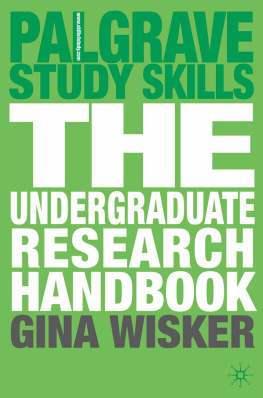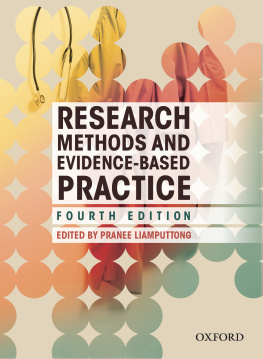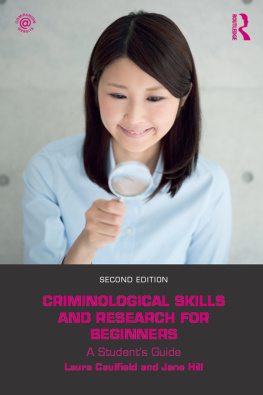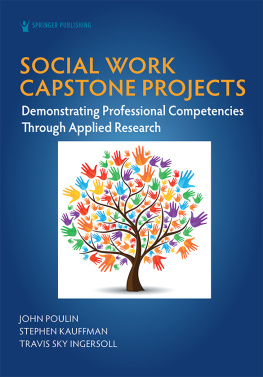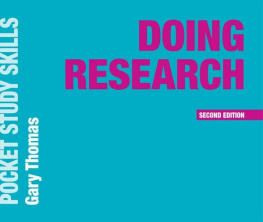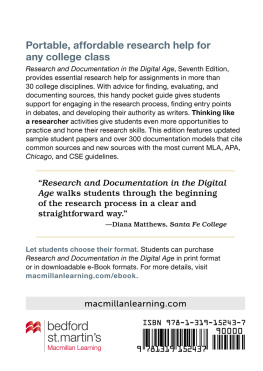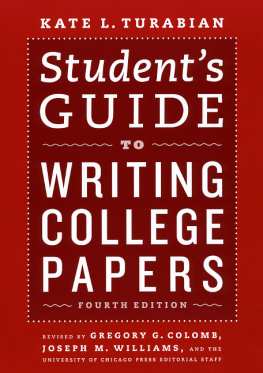Gina Wisker - The Undergraduate Research Handbook
Here you can read online Gina Wisker - The Undergraduate Research Handbook full text of the book (entire story) in english for free. Download pdf and epub, get meaning, cover and reviews about this ebook. year: 2009, publisher: Macmillan Education UK, genre: Art. Description of the work, (preface) as well as reviews are available. Best literature library LitArk.com created for fans of good reading and offers a wide selection of genres:
Romance novel
Science fiction
Adventure
Detective
Science
History
Home and family
Prose
Art
Politics
Computer
Non-fiction
Religion
Business
Children
Humor
Choose a favorite category and find really read worthwhile books. Enjoy immersion in the world of imagination, feel the emotions of the characters or learn something new for yourself, make an fascinating discovery.
- Book:The Undergraduate Research Handbook
- Author:
- Publisher:Macmillan Education UK
- Genre:
- Year:2009
- Rating:3 / 5
- Favourites:Add to favourites
- Your mark:
- 60
- 1
- 2
- 3
- 4
- 5
The Undergraduate Research Handbook: summary, description and annotation
We offer to read an annotation, description, summary or preface (depends on what the author of the book "The Undergraduate Research Handbook" wrote himself). If you haven't found the necessary information about the book — write in the comments, we will try to find it.
The Undergraduate Research Handbook — read online for free the complete book (whole text) full work
Below is the text of the book, divided by pages. System saving the place of the last page read, allows you to conveniently read the book "The Undergraduate Research Handbook" online for free, without having to search again every time where you left off. Put a bookmark, and you can go to the page where you finished reading at any time.
Font size:
Interval:
Bookmark:
The Undergraduate Research Handbook
www.skills4study.com the leading study skills website with FREE study tips, downloads and advice.
Palgrave Study Skills
Authoring a PhD
Business Degree Success
Career Skills
Critical Thinking Skills
e-Learning Skills (2nd edn)
Effective Communication for Arts and Humanities Students
Effective Communication for Science and Technology
The Exam Skills Handbook
The Foundations of Research
The Good Supervisor
Great Ways to Learn Anatomy and Physiology
How to Manage your Arts, Humanities and Social Science Degree
How to Manage your Distance and Open Learning Course
How to Manage your Postgraduate Course
How to Manage your Science and Technology Degree
How to Study Foreign Languages
How to use your Reading in your Essays
How to Write Better Essays (2nd edn)
How to Write your Undergraduate Dissertation
The International Student Handbook
IT Skills for Successful Study
Making Sense of Statistics
The Mature Students Guide to Writing (2nd edn)
The Mature Students Handbook
The Palgrave Student Planner
The Personal Tutors Handbook
The Postgraduate Research Handbook (2nd edn)
Presentation Skills for Students
The Principles of Writing in Psychology
Professional Writing (2nd edn)
Researching Online
Research Using IT
Skills for Success
The Study Abroad Handbook
The Students Guide to Writing (2nd edn)
The Student Life Handbook
The Study Skills Handbook (3rd edn)
Study Skills for Speakers of English as a Second Language
Studying Arts and Humanities
Studying the Built Environment
Studying Business at MBA and Masters Level
Studying Economics
Studying History (3rd edn)
Studying Law (2nd edn)
Studying Mathematics and its Applications
Studying Modern Drama (2nd edn)
Studying Physics
Studying Programming
Studying Psychology (2nd edn)
Teaching Study Skills and Supporting Learning
The Undergraduate Research Handbook
Work Placements A Survival Guide for Students
Writing for Nursing and Midwifery Students
Write it Right
Writing for Engineers (3rd edn)
Palgrave Study Skills: Literature
General Editors: John Peck and Martin Coyle
How to Begin Studying English Literature (3rd edn)
How to Study a Jane Austen Novel (2nd edn)
How to Study a Charles Dickens Novel
How to Study Chaucer (2nd edn)
How to Study an E. M. Forster Novel
How to Study James Joyce How to Study Linguistics (2nd edn)
How to Study Modern Poetry
How to Study a Novel (2nd edn)
How to Study a Poet
How to Study a Renaissance Play
How to Study Romantic Poetry (2nd edn)
How to Study a Shakespeare Play (2nd edn)
How to Study Television
Practical Criticism
Gina Wisker


Gina Wisker 2009
All rights reserved. No reproduction, copy or transmission of this publication may be made without written permission.
No portion of this publication may be reproduced, copied or transmitted save with written permission or in accordance with the provisions of the Copyright, Designs and Patents Act 1988, or under the terms of any licence permitting limited copying issued by the Copyright Licensing Agency, Saffron House, 610 Kirby Street, London EC1N 8TS.
Any person who does any unauthorised act in relation to this publication may be liable to criminal prosecution and civil claims for damages.
The author has asserted her right to be identified as the author of this work in accordance with the Copyright, Designs and Patents Act 1988.
First published 2009 by
PALGRAVE MACMILLAN
Palgrave Macmillan in the UK is an imprint of Macmillan Publishers Limited, registered in England, company number 785998, of Houndmills, Basingstoke, Hampshire RG21 6XS.
Palgrave Macmillan in the US is a division of St Martins Press LLC, 175 Fifth Avenue, New York, NY 10010.
Palgrave Macmillan is the global academic imprint of the above companies and has companies and representatives throughout the world.
Palgrave and Macmillan are registered trademarks in the United States, the United Kingdom, Europe and other countries.
ISBN-13: 9780230520974
This book is printed on paper suitable for recycling and made from fully managed and sustained forest sources. Logging, pulping and manufacturing processes are expected to conform to the environmental regulations of the country of origin.
A catalogue record for this book is available from the British Library.
A catalog record for this book is available from the Library of Congress.
10 9 8 7 6 5 4 3 2 1
18 17 16 15 14 13 12 11 10 09
Printed and bound in Great Britain by
CPI Antony Rowe, Chippenham and Eastbourne
This is more than a summary of the content of a dissertation, thesis, journal article, or other text; it lets a reader see what important contribution is being made by the research and written piece. The abstract is what is read first by a reader and so must be written clearly and in a straightforward and interesting manner so that they wish to read on. It should state the aims, outcomes and achievements of the dissertation or thesis (article or other), the theories used, the arguments, and the importance of its contribution to knowledge. Usually 300 words in length, it outlines the aim and focus of the study and it should identify, and answer, your main research question and sub-questions: What is this dissertation/thesis/research/essay about? What does it argue, prove, suggest? What has it achieved of importance? It should be written in the third person and in passive tone, for example, It is argued that... In discussing... Using... Evidence is presented which suggests that.... You will probably write the abstract right at the end of your work and after you have written everything else, when you can stand back and get a clear picture of your achievement. If published, the abstract along with complete reference details and key words are stored in abstracting and indexing services in libraries and archives so that they can be searched electronically.
This is a form of applied research and practitioner research in which researchers incorporate the participants in the design of the study, the process of investigation and the implementation of the findings (as collaborators). It feeds back to the participants and it engages the management and the whole organisation in the study (in a partnership) in the reflection and the changes related to the research process and outcomes. It is a way of modelling the next stage of the research. It involves reflective practice, reflection and innovation. Action research seeks to implement change, for example in policy, through the research itself. It also encourages the development of those involved.
Any influence that systematically distorts the results of a research study produces bias. It will obscure the true nature of what is being studied, and may be caused by the researcher or by the procedures for collecting data, including sampling. A reflexive account of the research can address the issues of trust that the existence of bias highlights. Subjectivity exists in both social science and pure science research, although we should always try to acknowledge and reduce it. It is clearly present in research methodology that relies on the construction of knowledge, where it is acknowledged that the sample, methods and design are all in variation and affected by time, place, the researcher, the sample, research practices and interpretative processes, among other things. Attempts at the removal of bias and opinion are enabled by a robust research design and triangulation of methods. Even in pure scientific research, where scientists carry out well managed and well documented experiments, their choice of experiments and, to some extent, the questions they ask of the data produced in order to interpret it are based on essentially subjective research questions and a need to know some things rather than others. This can be determined by different times and places, different needs and abilities, the opportunities for different kinds of study, and different subjects.
Next pageFont size:
Interval:
Bookmark:
Similar books «The Undergraduate Research Handbook»
Look at similar books to The Undergraduate Research Handbook. We have selected literature similar in name and meaning in the hope of providing readers with more options to find new, interesting, not yet read works.
Discussion, reviews of the book The Undergraduate Research Handbook and just readers' own opinions. Leave your comments, write what you think about the work, its meaning or the main characters. Specify what exactly you liked and what you didn't like, and why you think so.

